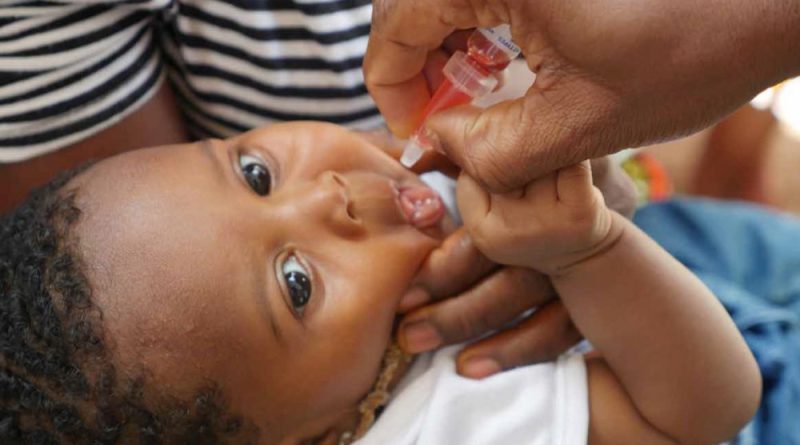South Asia Steps Up Shots
South Asia has recorded its highest-ever child immunisation rates in 2024, according to new data released today by World Health Organization (WHO) and United Nations Children’s Fund (UNICEF). The milestone marks a bounce-back from pandemic-era setbacks and reflects coordinated efforts across governments, communities, and frontline workers.
“This is a proud moment for South Asia. More children are protected today than ever before, thanks to tireless frontline health workers, strong government leadership, donors’ and partners’ support and the unwavering trust of families,” said Sanjay Wijesekera, UNICEF Regional Director for South Asia. “But we cannot forget the millions of children who are under-vaccinated or unvaccinated. Now is the time to push further, especially into the most rural areas, to give every child his or her right to healthcare in the earliest years of life.”
In 2024, 92 per cent of the infants in the region received their third dose of the Diphtheria, Tetanus, and Pertussis (DTP) vaccine, a key measure of vaccination efforts. This marks a two percentage point increase since 2023. During the same period, the proportion of children receiving their first dose of DTP increased from 93 per cent to 95 per cent. These figures show a strong bounce back, surpassing pre-COVID levels – reflecting the efforts of the South Asian governments to prioritise children’s health.
Additionally, there was a 27 per cent reduction in the number of children who did not receive a single dose of the vaccine, also known as zero-dose children, decreasing from 2.5 million to 1.8 million in a year.
Progress has been notably strong in India and Nepal. India reduced its number of zero-dose children by 43 per cent (from 1.6 million in 2023 to 0.9 million in 2024), and Nepal achieved a 52 per cent reduction (from 23,000 in 2023 to 11,000 in 2024). Pakistan also achieved its highest-ever DTP3 coverage at 87 per cent. However, Afghanistan still faces challenges, having the lowest coverages in the region and saw a 1 percentage point drop in coverage over the past year.
South Asia made the strongest strides in combating measles. In 2024, 93 per cent of infants received the first dose and 88 per cent received the second dose, up from 90 and 87 per cent, respectively. The number of measles cases dropped 39 per cent, from over 90,000 in 2023 to about 55,000 in 2024. However, vaccine coverage remains below the 95 per cent threshold required to prevent outbreaks.
“It is heartening to see WHO South-East Asia Region reach the highest ever immunisation rates, surpassing the pre-pandemic up-trend. We must build on this momentum and step up efforts to reach every child with these lifesaving vaccines. Together we can, and we must,” said Dr Thaksaphon Thamarangsi, Director Programme Management, WHO South-East Asia Region.
Vaccination coverage for adolescent girls in South Asia against human papillomavirus (HPV), a major cause of cervical cancer, increased from 2 per cent in 2023 to 9 per cent in 2024. Bangladesh saw notable success, vaccinating over 7.1 million girls since starting its HPV programme in 2023. Similarly, Bhutan, Maldives, and Sri Lanka increased their HPV vaccination rates by three percentage points (from 91 per cent to 94 per cent), 15 percentage points (from 60 per cent to 75 per cent), and 17 percentage points (from 31 per cent to 48 per cent) respectively in 2024. Nepal launched its national HPV vaccination campaign in February 2025 and has vaccinated over 1.4 million girls so far. India and Pakistan are expected to launch their HPV vaccination programmes later this year.
Behind these strides are years of work and collaboration, including:
• Governments’ leadership in prioritising immunisation, supported by strong policies and investments.
• The efforts of frontline health workers, including community health workers, most of whom are women, in reaching the most underserved families and boosting vaccine confidence.
• Increased community support and trust in vaccines.
• Long-standing support from donors, local partners and manufacturers to ensure vaccines are available and accessible everywhere.
• Use of digital tools, innovations, and improved data collection and monitoring to identify children who have missed their vaccinations.
• Targeted campaigns that have ensured children, adolescents, and mothers receive lifesaving vaccines on time.
While the region made leaps in immunising children in 2024, more than 2.9 million children remain un- and under-vaccinated and therefore unprotected.
With this in mind, UNICEF and WHO urge governments in South Asia to:
• Sustain political commitment and increase domestic financing for immunisation
• Expand HPV vaccination coverage
• Increase efforts to reach zero-dose and under-vaccinated children
• Invest in frontline health workers, including community health workers and community members who influence vaccine uptake behaviours
• Bridge the gaps in measles coverage
• Reinforce surveillance systems for vaccine-preventable diseases
The strides made in immunisation across South Asia demonstrate that collaborative effort can lead to remarkable achievements for children. Governments must now sustain this momentum to ensure every child has a healthy start in life.
The member countries of WHO South-East Asia Region are enhancing multi-source surveillance to improve public health intelligence and evidence for decision-making during complex health emergencies that are marked by uncertainties and compounded by multiple vulnerabilities.
“Through our experience of responding to the pandemics and emergencies we have learnt that decision making to manage health emergencies should be informed by a synthesis of multiple sources of information. This approach requires strengthening of surveillance systems and capacities, and of collaboration among diverse stakeholders from multiple sectors,” said Saima Wazed, Regional Director, at the three-day regional meeting ‘Advancing multisource collaborative surveillance in WHO South-East Asia Region’, held recently.
Emphasising that strong laboratory systems are the backbone of effective surveillance, Wazed called for enhancing investment in sustainable diagnostic capacities.
“The future of health security in our region depends on sustainable investments in surveillance and laboratory capacities, timely data-sharing, and cross-sectoral partnerships,” the Regional Director said.
Officials from member countries heading surveillance for epidemic and pandemic-prone diseases, public health laboratories, national public health operations centre, surveillance in other sectors such as animal health, environment, and meteorology, and those responsible for communicating events under International Health Regulations, and experts and partners, participated in the meeting.
They discussed priority actions to enhance collaboration among in-country surveillance stakeholders across sectors, and improve international information sharing and cross-border collaboration in the context of amended International Health Regulations (IHR) (2005).
Decision making during pandemics; epidemics; climate change driven health emergencies like vector-borne and waterborne diseases; other threats from human-animal-ecosystem interface—zoonosis, food-borne diseases, antimicrobial resistance, and health threats caused by disasters and humanitarian crisis—require multi-sectoral solutions.
To help countries roll out multi-source surveillance on the ground, WHO Regional Office for South-East Asia developed a regional manual “Informing Public Health Decision-Making with Multisource Collaborative Surveillance: A Step-by-Step Approach.” Using the manual, Indonesia and Nepal have initiated implementation of multisource collaborative surveillance (MSCS). More countries in the Region are planning roll-out of MSCS. In line with the approaches of MSCS, India has proposed creation of a South-East Asia Network of transboundary collaborative surveillance, which is expected to be discussed with member countries later this year.
The MSCS approach is critical as gathering and synthesising information from different sources are not always easy. The systems and data are owned by different surveillance stakeholders within and beyond the health sector, and mechanisms and procedures are not always in place to timely and effectively share and synthesise data and information from various sources.
The participants discussed opportunities to adopt innovation and enablers to strengthen early warning surveillance systems and public health intelligence, including the roles of genomic surveillance and wastewater surveillance as a part of multi-source collaborative surveillance. They discussed priority actions for the development of national action plans to guide the governance, implementation, and sustainability of genomic surveillance systems as a multisectoral approach.
“We must continue to embrace innovation and deepen regional collaboration,” the Regional Director said reiterating WHO’s commitment and her vision to promote regional and multi-sectoral collaboration, including among One Health stakeholders, and of using innovation to improve public health in the WHO South-East Asia Region.

